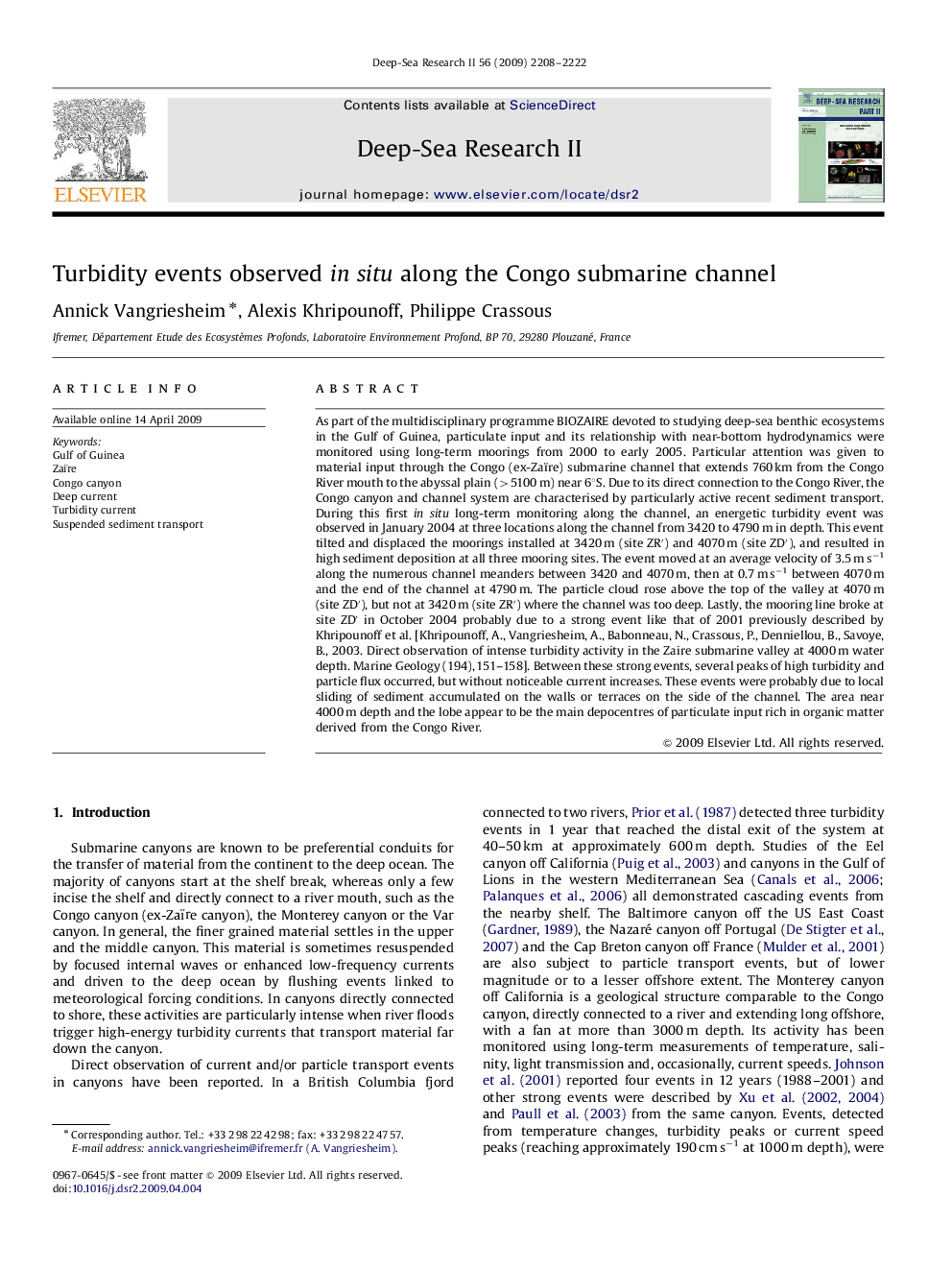| کد مقاله | کد نشریه | سال انتشار | مقاله انگلیسی | نسخه تمام متن |
|---|---|---|---|---|
| 4537444 | 1326370 | 2009 | 15 صفحه PDF | دانلود رایگان |

As part of the multidisciplinary programme BIOZAIRE devoted to studying deep-sea benthic ecosystems in the Gulf of Guinea, particulate input and its relationship with near-bottom hydrodynamics were monitored using long-term moorings from 2000 to early 2005. Particular attention was given to material input through the Congo (ex-Zaïre) submarine channel that extends 760 km from the Congo River mouth to the abyssal plain (>5100 m) near 6°S. Due to its direct connection to the Congo River, the Congo canyon and channel system are characterised by particularly active recent sediment transport. During this first in situ long-term monitoring along the channel, an energetic turbidity event was observed in January 2004 at three locations along the channel from 3420 to 4790 m in depth. This event tilted and displaced the moorings installed at 3420 m (site ZR′) and 4070 m (site ZD′), and resulted in high sediment deposition at all three mooring sites. The event moved at an average velocity of 3.5 m s−1 along the numerous channel meanders between 3420 and 4070 m, then at 0.7 m s−1 between 4070 m and the end of the channel at 4790 m. The particle cloud rose above the top of the valley at 4070 m (site ZD′), but not at 3420 m (site ZR′) where the channel was too deep. Lastly, the mooring line broke at site ZD′ in October 2004 probably due to a strong event like that of 2001 previously described by Khripounoff et al. [Khripounoff, A., Vangriesheim, A., Babonneau, N., Crassous, P., Denniellou, B., Savoye, B., 2003. Direct observation of intense turbidity activity in the Zaire submarine valley at 4000 m water depth. Marine Geology (194), 151–158]. Between these strong events, several peaks of high turbidity and particle flux occurred, but without noticeable current increases. These events were probably due to local sliding of sediment accumulated on the walls or terraces on the side of the channel. The area near 4000 m depth and the lobe appear to be the main depocentres of particulate input rich in organic matter derived from the Congo River.
Journal: Deep Sea Research Part II: Topical Studies in Oceanography - Volume 56, Issue 23, 1 November 2009, Pages 2208–2222